Home » Compare Generators » Jackery vs Anker Solar Generators: Detailed Comparison 2025
Jackery vs Anker Solar Generators: Detailed Comparison 2025

Jackery vs Anker are two of the biggest names in the portable power game right now especially in 2025 as more people go off-grid, hit the road in RVs, or prep for blackouts. But when it comes to choosing your ideal power station… which one actually delivers more value, speed, and long-term reliability?
In this in-depth breakdown, we’ll compare Anker Solix vs Jackery, including top model matchups like the Anker Solix C1000 vs Jackery 1000 V2, Anker 535 vs Jackery 500, Anker Solix F2000 vs Jackery 2000 Plus, and more.
Whether you’re a weekend camper or building a solar-powered backup system for your home, we’ll help you figure out which brand is best for your needs without the hype.
Brands Overview

Jackery: Portability Meets Reliability
Founded in 2012 and often dubbed the “pioneer of portable solar generators,” Jackery has become a household name in outdoor and emergency power. The brand exploded in popularity thanks to its Explorer and Solar Generator series, which combine rugged battery stations with foldable solar panels.
Jackery has built its reputation around simplicity, ease of use, and reliability. Its generators are especially popular among, RV travelers and van lifers, Campers and weekend warriors and Homeowners looking for light emergency backup.
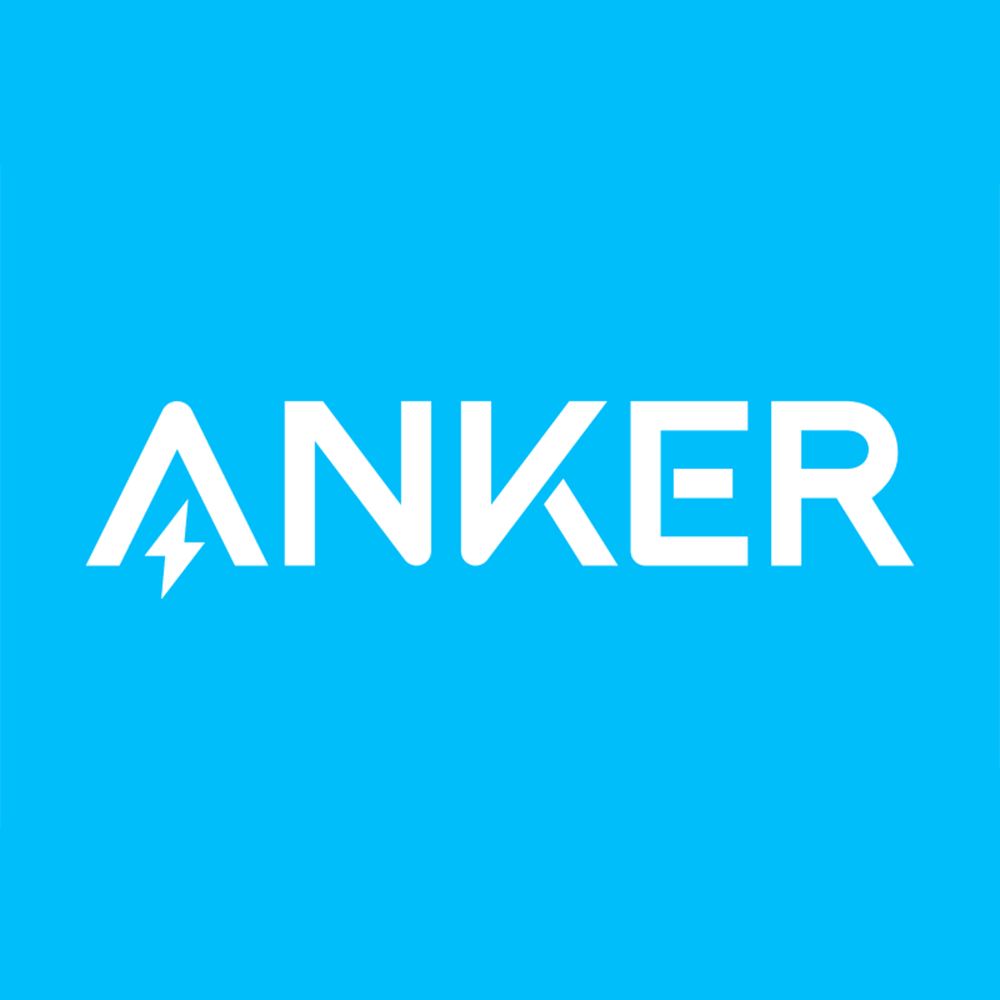
Anker: Innovation Meets Efficiency
Anker might be better known for making power banks and chargers, but don’t underestimate its portable power lineup. With the launch of the Anker Solix brand in 2023, the company went all-in on solar generators and high-capacity battery stations, focusing on durability, innovation, and user-centric design.
Anker Solix models like the C1000, F2000, and F3800 are designed to be smart, fast-charging, and modular perfect for both casual and advanced users. Many units offer LFP batteries (LiFePO4), GaN-powered fast charging, and robust app support.
Key Model Matchups
1
Best Mid-Size Portable
Anker Solix C1000 vS Jackery 1000 V2
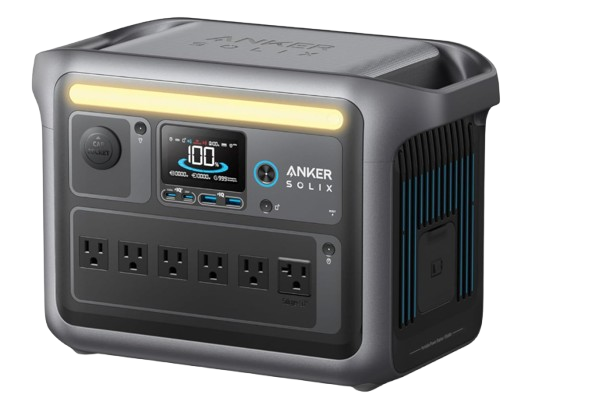
Anker Solix C1000
- Battery Capacity: 1,056Wh (3,000+ cycles)
- Output Power: 1,800W AC (surge 2,400W)
- Battery Type: LiFePO₄ battery
- Solar Input: 600W
- AC Charging Speed: 0–100% in 58 minutes
- Connectivity: Smart app (WiFi + Bluetooth)
- Weight: 28.4 lbs
- Expandability: Stackable expansion up to 2kWh
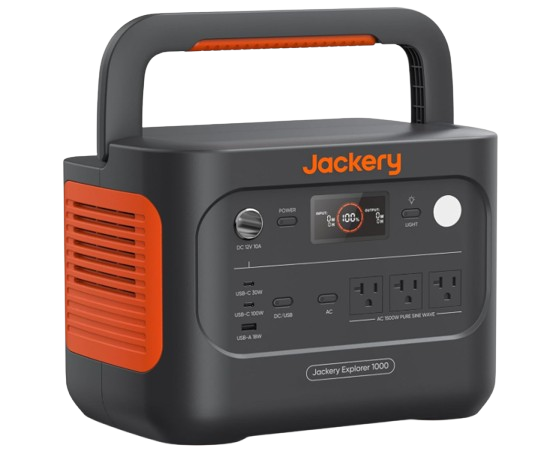
Jackery 1000 V2
- Battery Capacity: 1,264Wh (2,000 cycles)5kWh)
- Output Power: 2,000W AC output (4,000W surge)
- Battery Type: NMC battery
- Solar Input: 600W
- AC Charging Speed: ~1.7 hours
- Connectivity: Bluetooth-only app
- Weight: 22 lbs
- Expandability: No expansion support
Winner Is Anker Solix C1000
Anker wins for faster charging, better app control, and battery longevity with LFP tech. Jackery offers slightly more output but lacks expandability.
2
Best Compact Unit
Anker 521 vS Jackery 240

Anker 521 PowerHouse
- Battery Capacity: 256Wh
- Output Power: 200W (450W surge)
- Battery Type: LiFePO₄ battery
- Solar Input: ~65W (via adapter)
- AC Charging Speed: Fast GaN charging (under 2 hrs) 3 hours
- Connectivity: ❌ None
- Weight: 8.2 lbs
- Expandability: ❌ No

Jackery Explorer 240
- Battery Capacity: 240Wh
- Output Power: 200W (400W surge)
- Battery Type: NMC (500 cycles)
- Solar Input: 65W (approx)
- AC Charging Speed: ~5 hrs
- Connectivity: ❌ None
- Weight: 6.6 lbs
- Expandability: ❌ No
Winner is Anker 521 PowerHouse
It’s no contest Anker gives you modern ports, longer battery life, and faster charging. Jackery 240 is good for the ultra-minimalist, but outdated by today’s standards.
3
Best Value 500Wh Class
Anker 535 vS Jackery 500
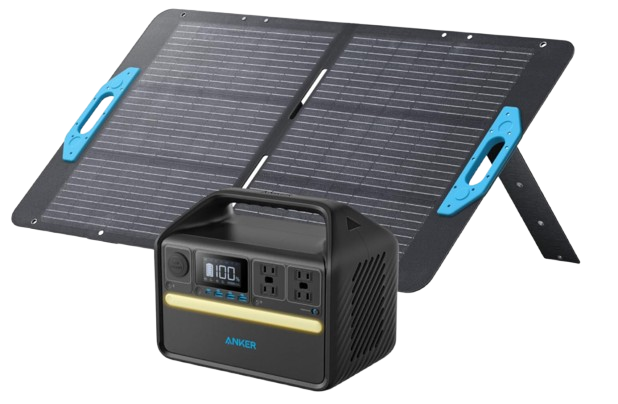
Anker 535 PowerHouse
- Battery Capacity: 512Wh
- Output Power: 500W (750W surge)
- Battery Type:LiFePO₄
- Solar Input: 120W
- AC Charging Speed: ~2.5 hours
- Connectivity: ❌ None
- Weight: ~16.7 lbs
- Expandability: ❌ No
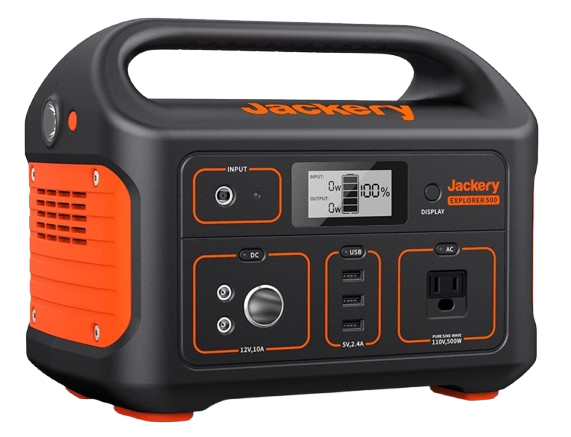
Jackery Explorer 500
- Battery Capacity: 518Wh
- Output Power: 500W (1,000W surge)
- Battery Type:NMC
- Solar Input: 100W
- AC Charging Speed:~7.5 hours
- Connectivity: ❌ None
- Weight: 13.3 lbs
- Expandability: ❌ No
Winner is Anker 535
With USB-C, faster charge times, and LiFePO₄ battery tech, Anker’s the more modern and future-proof choice.
4
Best 300Wh Class
Anker Solix C300 vS Jackery 300
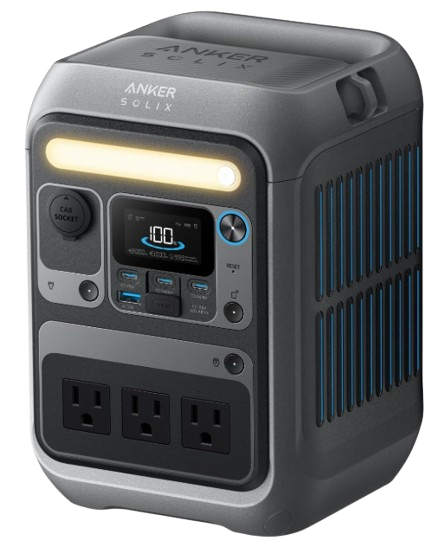
Anker Solix C300
- Battery Capacity: 299Wh
- Output Power: 300W
- Battery Type:LiFePO₄
- Solar Input: ~100W
- AC Charging Speed: ~50 minutes
- Connectivity: App (Bluetooth + WiFi)
- Weight: ~8.5 lbs
- Expandability: Yes
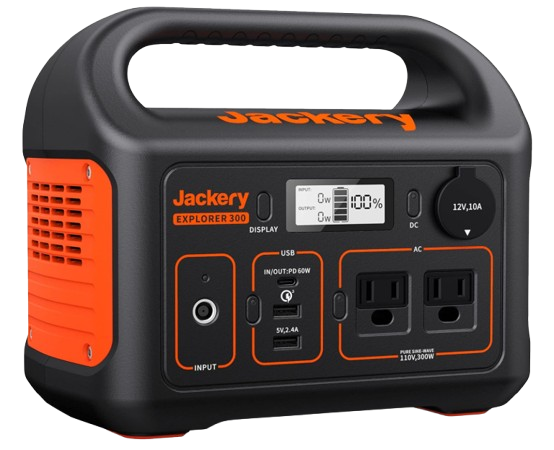
Jackery Explorer 300
- Battery Capacity: 293Wh
- Output Power: 300W
- Battery Type:NMC
- Solar Input: 100W
- AC Charging Speed: 4.5 hours
- Connectivity: ❌ None
- Weight: 7.1 lbs
- Expandability: ❌ No
Winner is Anker Solix C300
Anker gives more ports, faster charging, and expandability. Jackery’s older design holds it back despite its portability.
5
Best High-Capacity Model
Anker Solix F2000 vS Jackery Explorer 2000 Plus
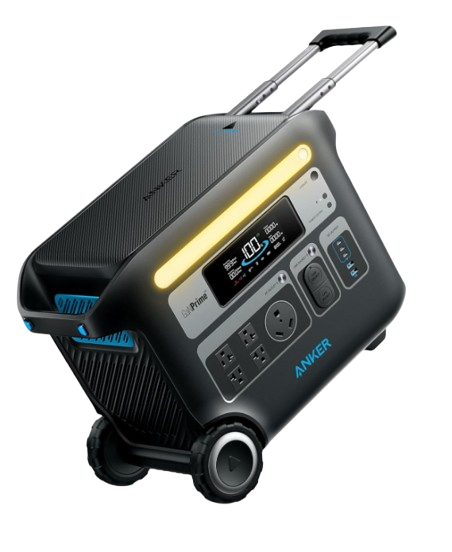
Anker Solix F2000
- Battery Capacity: 2,048Wh
- Output Power: 2,400W (4,800W surge)
- Battery Type: LiFePO₄
- Solar Input: 1,000W
- AC Charging Speed: 1.4 hrs (GaN)
- Connectivity: WiFi + Bluetooth (Anker App)
- Weight: 52 lbs
- Expandability: Yes (dual stackable)
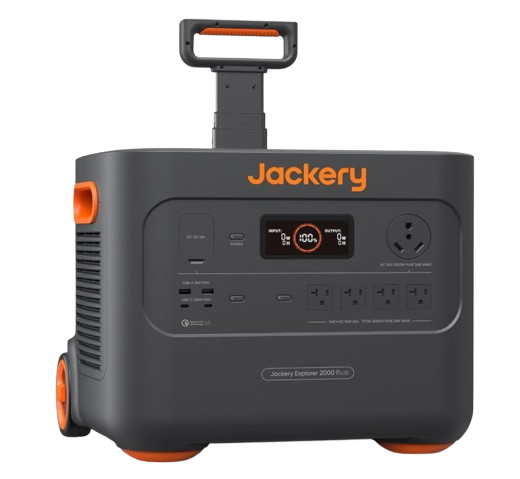
Jackery Explorer 2000 Plus
- Battery Capacity: 2,048Wh
- Output Power: 3,000W (6,000W surge)
- Battery Type: LiFePO₄
- Solar Input: 1,200W
- AC Charging Speed: 2 hrs
- Connectivity: Bluetooth (Jackery App)
- Weight: 44 lbs
- Expandability: Yes (up to 12kWh)
Winner is Jackery Explorer 2000 Plus
Jackery wins here for its superior output and better expansion potential. Anker’s still great, but Jackery edges out in total power and flexibility.
6
Ultimate Power Showdown
Anker Solix F3800 vS Jackery Explorer 5000 Pro
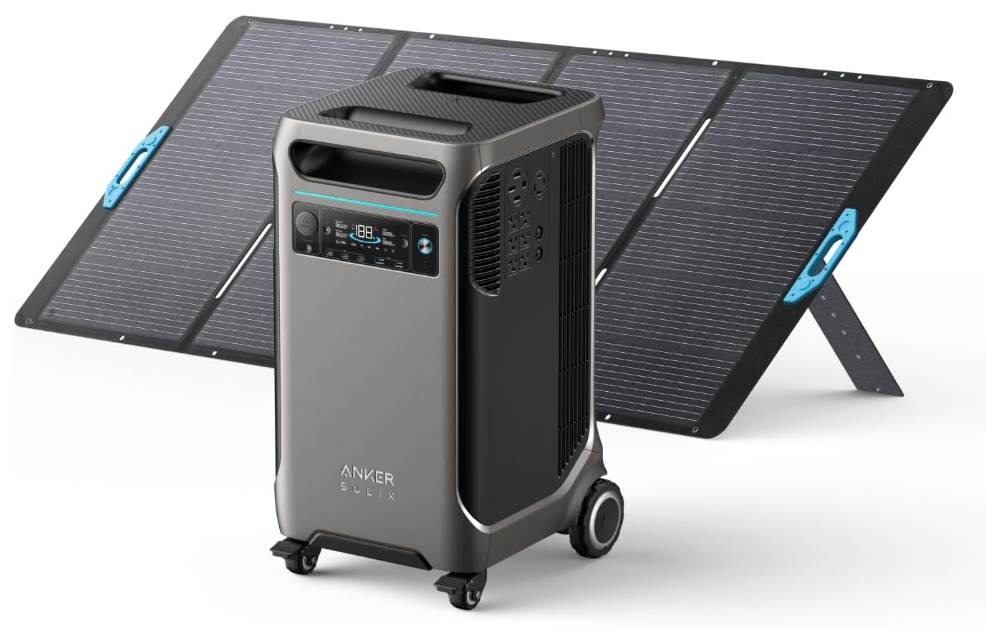
Anker Solix F3800
- Battery Capacity: 3,840Wh
- Output Power: 6,000W (9,000W surge)
- Battery Type: LiFePO₄
- Solar Input: 2,400W
- AC Charging Speed: 2 hrs (with GaN)
- Connectivity: Full smart app + 240V support
- Weight: 132 lbs (60 kg)
- Expandability: Yes (up to 26.9kWh)

Jackery Explorer 5000 Pro
- Battery Capacity: 5,000Wh (speculative)
- Output Power: 3,000W (estimated)
- Battery Type: LiFePO₄
- Solar Input: High (estimated)
- AC Charging Speed: 2 hrs
- Connectivity: Jackery app (Bluetooth/Wi-Fi), 240V support via connector
- Weight: 137 lbs (62.1 kg)
- Expandability: Yes, up to 20.6kWh (with 5 × 2500 Plus battery packs)
Winner is Anker Solix F3800
Until Jackery officially releases the 5000 Pro, Anker dominates this high-capacity space with sheer wattage, scalability, and smart home integration.
Feature-by-Feature Comparison
- Battery Chemistry
Anker uses LiFePO₄ (LFP) batteries across nearly all of its Solix and PowerHouse series. These batteries are:
- Rated for 3,000+ cycles (up to 10 years of daily use)
- More thermally stable and safer
- Ideal for regular off-grid or heavy-duty use
Jackery, on the other hand, uses NMC (Li-ion) in many models like the Explorer 500 and 1000. But in newer models (e.g., Jackery 2000 Plus, 1000 V2), they’ve started shifting to LiFePO₄ too.
🏆 Winner is Anker
Anker is more consistent with LFP batteries, giving users longer lifespan and better safety right out of the box.
- Power Output & Surge Capacity
Jackery often delivers higher peak wattage, especially in newer models like the Explorer 2000 Plus (3,000W continuous / 6,000W surge). That makes it ideal for running high-demand appliances like RV air conditioners, power tools, or home backup loads.
Anker matches or exceeds Jackery in some models (like the Solix F3800 with 6,000W AC output), but in mid-tier models like the C1000 or 535, Jackery usually holds the wattage edge.
🏆 Winner is Jackery
If you prioritize raw power output, Jackery tends to push the limits harder — especially in higher-tier models.
- Solar & AC Charging Speed
Anker stands out with HyperFlash™ charging, letting you go from 0–100% in under an hour on some models (C1000, F2000). Solar input is also strong, often ranging from 300W–2,400W depending on the unit.
Jackery has recently caught up, their Plus Series offers 1,200W solar input and AC charging in under 2 hours. But older models are slower and support less solar input.
🏆 Winner is Anker
Anker leads slightly here thanks to consistent high-speed AC charging and wide solar compatibility across the lineup.
- Ports & Expandability
Anker tends to load its units with:
- USB-C PD (up to 100W)
- More AC outlets (4–6 total)
- Higher-wattage car ports
- App-controlled port switching
- Modular expansion (especially in Solix)
Jackery has improved port selection in newer models but still lags in USB-C support for small/mid units. Older Jackery models (Explorer 300/500/1000) often lack USB-C entirely.
🏆 Winner is Anker
Anker packs more modern ports and better expandability into smaller packages. Jackery is catching up but still behind in mid-range models.
- Smart App & Monitoring Features
Anker’s app offers:
- WiFi + Bluetooth connectivity
- Real-time power stats
- Charging/discharge scheduling
- Smart alerts and firmware updates
Jackery’s app is simpler, Bluetooth-only (even in latest models), and lacks advanced scheduling or remote control features.
🏆 Winner is Anker
Anker’s app feels more polished, flexible, and “smarter,” especially for tech-savvy users or remote off-grid setups.
- Portability & Design
Jackery wins in form factor. Their units are:
- Lighter and more compact
- Feature molded handles for easy carry
- Designed for quick grab-and-go use
Anker units are sometimes bulkier, especially when expandable. However, newer Solix models now feature stackable design that saves space during storage.
🏆 Winner is Jackery
For camping, road trips, or vanlife, Jackery’s compact designs are hard to beat in terms of convenience and grab-and-go usability.
Real-World Scenarios: Who Wins?
- Van Life & Camping Trips
Pick Jackery
Jackery’s ultra-portable designs, built-in handles, and rugged reliability make them ideal for life on the road. Models like the Jackery Explorer 1000 V2 or 2000 Plus deliver all the power you need without taking up precious van space. Plus, their solar panels are super easy to set up at camp.
✅ Jackery wins for lightweight convenience and easy transport.
- Air Travel or Ultra-Compact Needs
Pick Anker 521 or Jackery Explorer 240
Both are TSA-compliant (under 300Wh) and fit easily in backpacks or suitcases. But Anker’s modern USB-C port and LiFePO₄ edge out Jackery’s older design.
✅ Anker wins by a hair for portability + future-proof features.
- For Home Backup
Pick Anker (if you want whole-home)
If you’re serious about powering your entire home or critical circuits during outages, the Anker Solix F3800 is one of the few in its class that supports 240V split-phase output and home panel integration.
Pick Jackery (if you want plug-and-play)
The Jackery Explorer 2000 Plus gives you solid backup capacity with simpler setup — just plug in and go.
✅ Anker wins for full-home backup setups; Jackery is better for casual emergency use.
- For Power Tools or Emergency
Pick Anker
The Anker Solix F2000 or F3800 offer serious wattage and better port selection (think 100W USB-C, more AC plugs). You also get better surge protection and app-controlled outputs for smart tool usage.
✅ Anker wins for high power output + modern port support.
Anker Pros & Cons
Pros
- Faster charging speeds: Anker’s HyperFlash™ tech charges units in under 1.5 hours.
- More advanced ports: Up to 100W USB-C, multiple AC outlets, and app control.
- Modern battery chemistry: Uses LiFePO₄ in nearly all new Solix models (longer lifespan).
- Expandable and modular: Especially strong in higher-end models (F2000, F3800).
- Supports 240V split-phase: Only Anker offers this for whole-home power backup.
cons
- Heavier units: Higher-end models are bulkier than Jackery’s equivalents.
- Newer to the market: Fewer long-term reviews and less brand recognition (launched in 2021).
- App required for advanced features: Can be a hassle for those who prefer simplicity.
JACKERY Pros & Cons
Pros
- Jackery has been a trusted name in the portable power space since 2012.
- Lightweight + travel-friendly: Many Jackery units are lighter and easier to carry than competitors.
- User-friendly interface: Simple plug-and-play design with no confusing tech or apps.
- Excellent customer support: Highly rated for post-purchase service and warranty handling.
- Wide range of models: From the ultra-portable 240 to the powerful 3000 Pro, there's a size for every user.
cons
- Slower charging: AC and solar input is lower than Anker across the board.
- No 240V support: Can’t power split-phase home appliances or panels.
- Battery chemistry: Uses older lithium-ion (except in newer Plus models).
- Limited port selection: Fewer USB-C or high-wattage ports compared to Anker.
- Customer Support & Warranty

Anker 5-year warranty

Jackery 2–5 years depending on model
Both offer strong support and growing communities.
- Final Verdict: Which One Should You Buy?
Choosing between Jackery and Anker SOLIX ultimately comes down to how you plan to use your solar generator—and what matters most to you: simplicity, power, or long-term value.
Choose Jackery if:
- You want a proven brand with a massive following and polished experience
- Simplicity and portability matter more than advanced smart features
- You need quick customer support and solid reliability
- You’re pairing with Jackery solar panels for a plug-and-play system
Choose Anker SOLIX if:
- You want the latest battery tech (LiFePO₄) and longer cycle life
- Smart connectivity, fast charging, and futureproof expandability matter
- You’re okay with slightly heavier units for more power per dollar
- You’re looking for the longest warranty (up to 5 years) in this price class
Share
